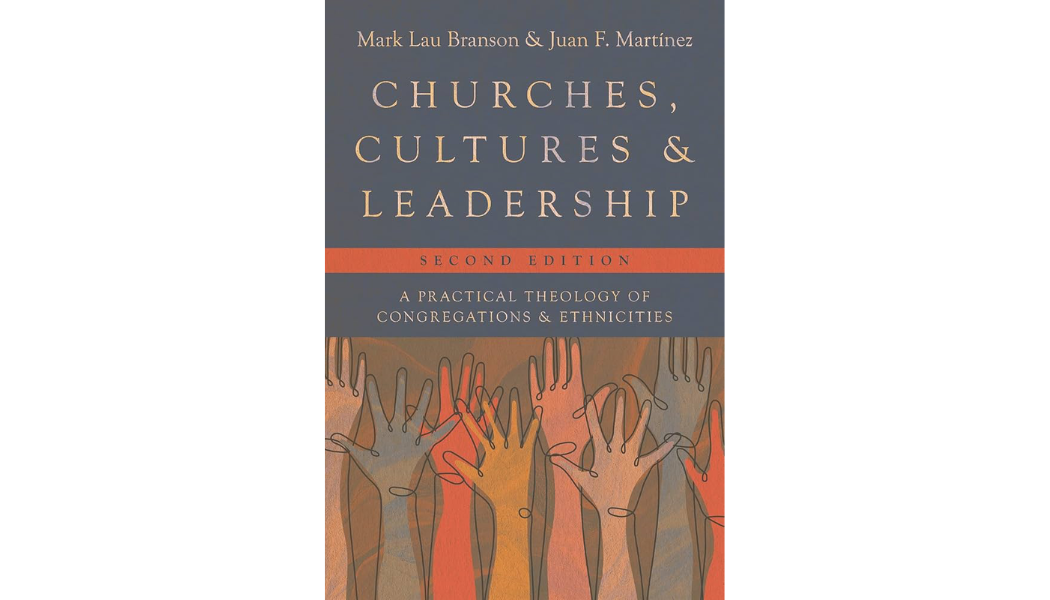By Mark Lau Branson and Juan F. Martinez
InterVarsity Press (2023)
2nd edition, 296 pages
Reviewed by JOE M. FEARS
This book review is being written to give credence to leadership and help solve the problem that a local ministry is experiencing with its leadership team. The problem stems from the ministry’s leadership team’s failure to attract and retain new members. One of the main objectives of the authors is to stir the church away from a homogeneous principle that teaches growth is most likely when a church remains racially specific (p. 11). It looks at how theology, culture, and ethnicity have a relationship. The authors use a historical perspective to pinpoint instances whereby cultural anthropology offers awareness of human dynamics (p. 94). Ultimately the book gives solid reasons why church leaders should focus on meeting the challenges that diversity brings so that a community spirit will exist in the local church.
Strengths of the Book
It is commonly said, “America is a great melting pot.” The great controversy in America is how to handle diversity. One reason has to do with racial tensions in America. However, Branson and Martinez note that for roughly three years, in the teeth of a howling secular and religious press, the people of Azusa Street Mission demonstrated that they could cross these social lines and bear great fruit as they did so. It starkly contrasted that during the early 20th century, true believers proved diversity could work (p. 11). One of the best aspects of this book was to show that we can do it together through Christ’s love. In a journal article, Muck (2017) writes, “As a church, we need to faithfully embrace that diversity and then commit ourselves to developing a way of understanding and loving one another, in spite of cultural difference and misunderstanding (p. 194).” Azusa Street Mission was a good example of what the church needs to do today.
Another great concept in the book dealt with understanding intercultural relationships. We must study our cultural history to consider each other’s cultural differences (p. 50). So many people are focused on being comfortable with their culture, and when diversity comes along, it threatens their biases toward each other. Therefore, we must be willing to go beyond our comfort zone to seek total reconciliation for the sake of Christ. According to Branson and Martinez, “Our concern for creating relationships and organizations that exhibit intercultural life is related to numerous topics of Christian theology, most notably anthropology, soteriology, the Trinity, ecclesiology, eschatology and missiology” (p. 51).
Weaknesses of the Book
The authors made valid points regarding the Azusa revival, but that which worked in the early 20th century may be irrelevant today. People believed a certain way and held to a specific philosophy. Today, however, because America is a melting pot, opinions vary, even in the church. For instance, a credentialed minister advocated for “abortion by prescription,” claiming that most evangelicals, even Billy Graham, would consent to abortion in specific instances (Wilkinson & Ambrose, p. 112). This would have been unheard of in the early 20th century. Most people, in general, didn’t think that way. Consequently, trying to replay something from the past doesn’t always work.
Branson and Martinez argue, “Communicative competence requires validity in all three worlds for discourse to be valid and for understanding to be genuine (p. 190). The authors are referring to the objective world (descriptive speech), the subjective world (inner self), and the social world (interpersonal) (p. 190). Saying that each of the three must somehow be validated remains to be seen. Here’s why: Iacus and Porro state, “The first issue raised by this new data source is a technological one: the increase in computational power of technological devices does not guarantee, per se, the ability to separate helpful information from background noise in virtual conversations” (2021, p. 5). Just through technology alone, it is clear that the three ideas are not always linked.
Evaluation
The body of this work is Christ-centered because it focuses on love and reconciliation. It also profoundly examines the relationship between theology, culture, and ethnic behaviors. The authors do an excellent job of describing critical terms. For example, they write, “The term ‘praxis’ is the term we use to describe the ongoing life of a church that moves between ‘study/reflection’ and ‘engagement/action’” (p. 25). Thus, the authors show how leaders should always consider the importance of worldviews, veracity, and people’s assumptions worldwide (p. 111). Overall, the book provides a solid background for academic research on leadership and culture from a Christian worldview.
Conclusion
The book’s overall impression is enlightening because it presents factual research. It gives definitions and terminologies that help one understand the importance of diversity. The authors’ use of historical and cultural anthropology creates awareness for the reader. One can gain an in-depth analysis of the objective, subjective, and social world constructs that cause one to understand others better. This body of work also provides keen insight into solving ministry problems in which leadership is experiencing paradigm paralysis. Thus, this book can be a significant contributor to those experiencing leadership ministry problems involving cultural diversity.
References
Iacus, S. M., & Porro, G. (2021). Subjective well-being and social media. Chapman & Hall.
Muck, T. C. (2017). Intercultural hermeneutics. International Bulletin of Mission Research, 41(3), 194–202. https://doi.org/10.1177/2396939317698779
Wilkinson, M., & Ambrose, L. M. (2020). After the revival: Pentecostalism and the making of a Canadian church. McGill-Queen’s University Press.

